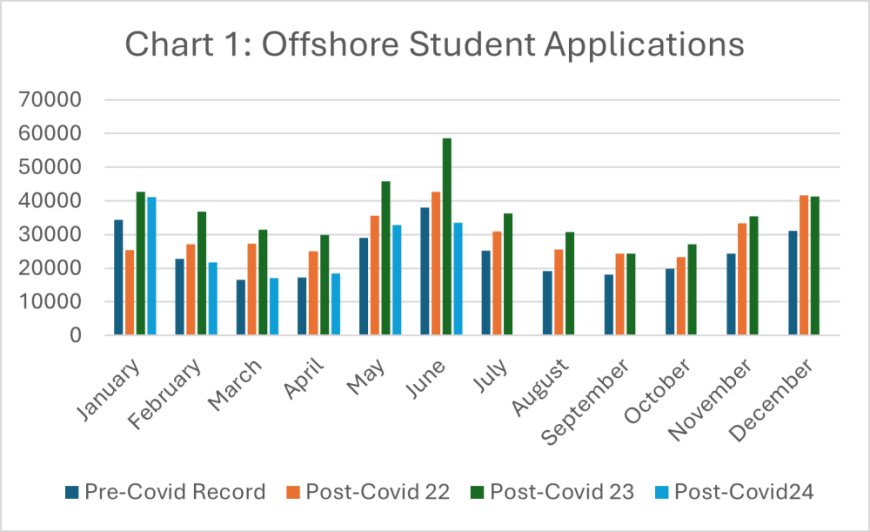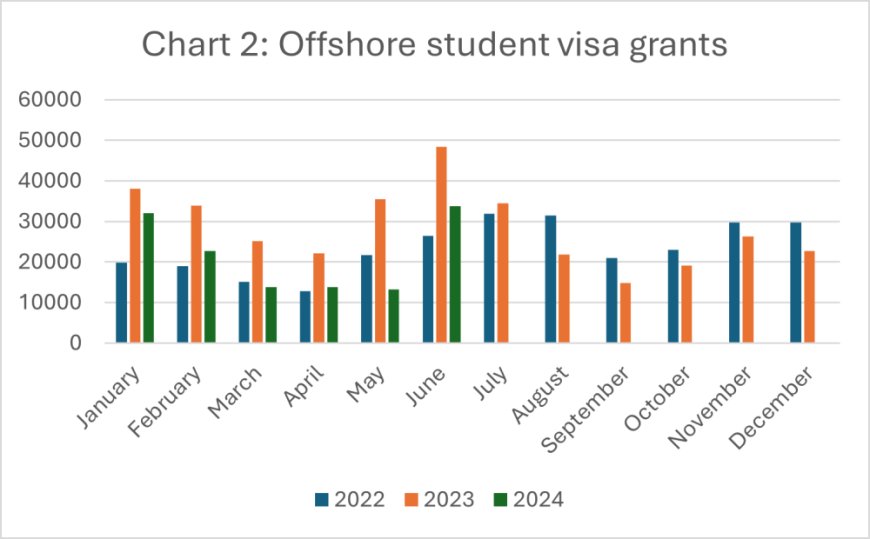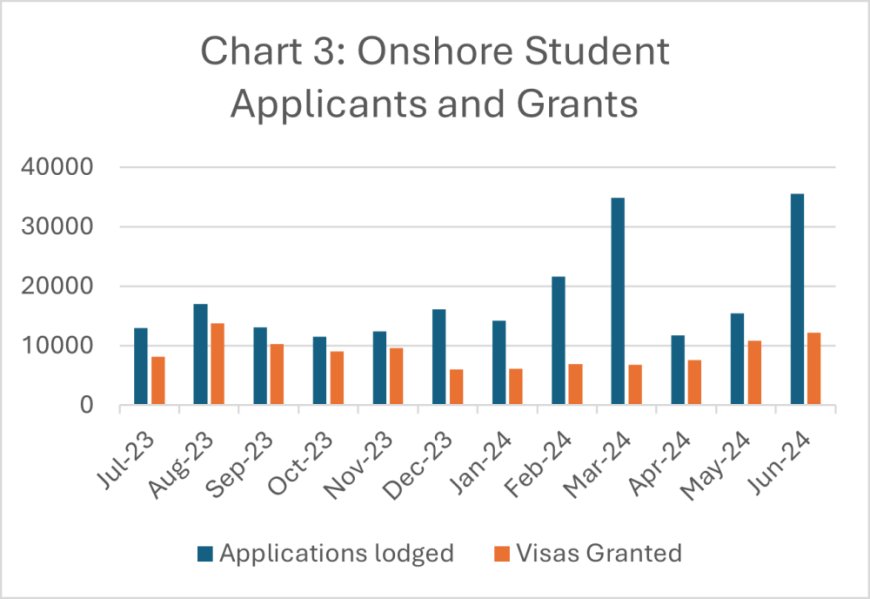Australia's Record-Breaking Student Visas in June 2024 | Australia Immigration News
Student visa surge in June 2024 prompts the government to consider new measures to control net migration. Policy impacts and source nation trends highlighted.
With student visa numbers surging, the Government will need to explore new methods to reduce application rates to meet its net migration forecast. There were 45,992 student visas granted in June 2024. Despite extensive student visa policy tightening over the past 12 months, ministers anticipated a sharper decline in application rates and higher refusal rates to achieve the lower net migration forecast for 2024-25.
Offshore Student Visas
Offshore student applications in June 2024 totaled 33,501, significantly lower than the June 2023 record of 58,526, the June 2022 level of 42,700, and the pre-COVID record of 38,041. Seventy-five percent of these applications were in the Higher Education sector, which had a much higher approval rate (93.3%) compared to the English Language (77.7%) and Vocational Education and Training (V.E.T.) (41.6%) sectors, indicating that the policy might be working as intended.

However, offshore student grants in June 2024 were 33,777. While this was below the 48,429 grants in June 2023, it was significantly higher than the 26,430 in June 2022 due to a substantial jump in the approval rate from 72.6% in May 2024 to 88.4% in June 2024. This increase suggests a substantial number of new student arrivals in July 2024, which will boost net migration, albeit less than in previous years.

Higher grant rates for most major source nations contributed to this large number of offshore grants, including:
- China: 92.5% in May 2024 to 97.5% in June 2024
- India: 50% in May 2024 to 81.4% in June 2024
- Nepal: 70.4% in May 2024 to 89.8% in June 2024
- Pakistan: 15.1% in May 2024 to 46.6% in June 2024
- Sri Lanka: 72.7% in May 2024 to 84.3% in June 2024
- Bhutan: 59.8% in May 2024 to 90.2% in June 2024
Even with an increase in visa processing staff, maintaining high refusal rates using subjective criteria is unsustainable. This challenge might partly explain the significant increase in student visa fees from 1 July 2024. A more effective approach is needed to balance the objective of attracting high-performing students while controlling visa approvals.
Interesting Trends from Bangladesh and Colombia
Bangladesh has become a major source nation, ranking in the top five. There were 1,355 offshore student visa applications from Bangladesh in May 2024, rising to 1,883 in June 2024. The approval rate increased from 87.4% in May 2024 to 96.8% in June 2024. This high approval rate is likely due to most Bangladeshi students enrolling in the Higher Education sector, particularly with Group of Eight universities, which have low risk ratings.
The key concern will be whether the Bangladeshi cohort maintains compliance with visa conditions and avoids adding to the growing number of students in immigration limbo.
Colombia, which saw a boom post-COVID with around 24,000 offshore student visa applications in 2022-23, experienced a sharp decline to 494 in June 2024 from 2,198 in June 2023. The offshore grant rate for Colombian students fell from around 90% in 2022-23 to about 50% in the first half of 2024. This decline is likely due to the high risk rating of English language providers and the recent increase in asylum applications from Colombian students.
Onshore Student Visas
Onshore student applications in June 2024 saw a massive jump to 35,561, surpassing the previous record of 34,888 in March 2024. This surge, driven by V.E.T. and English language providers, is partly due to students using visitor visas to enter Australia and then applying for onshore student visas to avoid higher offshore refusal rates—a path that was closed from 1 July 2024.

In June 2024, over 62% of primary onshore student applications were for the V.E.T. sector. To address this, the Government reduced the onshore student grant rate from around 90% in the first half of 2023-24 to about 70% in the second half, primarily using subjective criteria. This led to a rapid increase in onshore student refusals being appealed and a growing backlog of onshore student applications, with many applicants now on bridging visas. Additionally, there is strong growth in students applying for asylum.
The situation is a result of previous government policies encouraging student visa applications and the current government's slow response to control the boom. Regaining control will be a long and challenging process, and capping student numbers at each provider may not be a satisfactory long-term solution.
What's Your Reaction?
 Like
0
Like
0
 Dislike
0
Dislike
0
 Love
0
Love
0
 Funny
0
Funny
0
 Angry
0
Angry
0
 Sad
0
Sad
0
 Wow
0
Wow
0









































































































